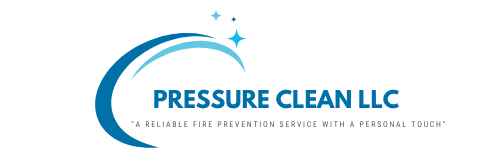For the safety and efficiency of cooking, it is crucial to clean the kitchen hood. Over time, grease and debris can build up, leading to fire hazards and reduced airflow. Here’s how you can efficiently clean your kitchen hood using pressure washing.
The Importance of Kitchen Hood Cleaning
Your kitchen exhaust hood allows ventilation in the kitchen and keeps out heat, steam, smoke, and grease. Without such servicing, all of that grease deposition can be deadly by causing fires and clogging up the whole ventilation system-affecting even air quality as well as that of the whole kitchen. Ensuring regular cleanings will also ensure a cleaner and more efficiently working environment.
Using pressure washing on the kitchen hood will remove grease and grime, restoring the functionality of your system and the flow of air. With proper methods and equipment, you’ll avoid serious problems while keeping your kitchen in top condition.
Preparing for Kitchen Hood Pressure Washing
Before beginning any pressure washing job, preparation is crucial. Make sure you clear the area around the kitchen hood and exhaust system. This includes removing any combustible materials, covering electrical components, and ensuring that employees or workers are safely out of the way.
Additionally, ensure the exhaust system is turned off. In the case of grease buildup, consider pre-treating the surfaces with degreasers to loosen stubborn grease. This will allow the pressure washing to be more effective, saving you time and ensuring the job is done right.
Choosing the Right Equipment for the Job
Right equipment selection in the cleaning of kitchen hoods in the form of pressure washing equipment should be followed. A high-commercial-grade pressure washer is very efficient when it comes to breaking down grease and grime. It heats water up to 200 degrees. However, a cold-water pressure washer can also be used but might require some cleaning agent to produce the same effect.
The proper pressure setting will be crucial when it comes to nozzle selection. Too much pressure can damage surfaces, while too little will not clean properly. Normally, the best pressure range is between 1500-2500 PSI.
Step-by-Step Process for Effective Hood Cleaning
- Disconnect the Power Supply: Start by disconnecting the exhaust system from its power source to prevent any accidents during the cleaning process.
- Apply Degreaser: Before using the pressure washer, apply a degreasing solution to the kitchen hood. This breaks down the grease and makes it easier for the pressure washer to clean effectively.
- Pressure Washing the Hood: Use a hot water pressure washer. Start from the top of the hood, working your way down to avoid dripping grease onto clean surfaces. Hot water will clean and sanitize surfaces so that the dirt does not return.
- Clean the Ducts and Vents: Don’t just focus on the hood. The ducts and vents that connect to the hood also need cleaning. These parts often collect grease and debris. Insert your pressure washer’s nozzle into the ducts, ensuring all parts are cleaned thoroughly.
- Rinse Thoroughly: After applying pressure, rinse the entire system with water to remove any leftover debris or cleaning solution.
- Dry and Inspect: Let the system dry completely such that there would be no retention of moisture in it, that might attract mold or mildew. On the drying of the system, open the exhaust hood and ducts, so that the exhaust system is observed for complete cleanliness.
Common Mistakes to Avoid When Cleaning Kitchen Hoods
While pressure washing can be very effective, there are a few mistakes you want to avoid so that the job is done right. Generally, one mistake many people make is using way too high of a pressure setting, which can rub against the exhaust system’s delicate parts.
Parts can be exposed to water damage; thus, the cost of repairs is high. In addition, it is not advisable to skip the pre-treatment stage. For example, surface degreasing is one practice that helps in complete cleaning by using a pressure washer.
Lastly, rushing the process or failing to clean the ducts can result in incomplete cleaning, leaving your system still vulnerable to grease buildup and fire hazards.
Safety Precautions During Pressure Washing
Safety should always be at the top when performing kitchen hood cleaning. Always ensure to don proper personal protective equipment on, including gloves, goggles, and long sleeves. Also, ensure the area before starting the job is free from flammable materials.
Be careful when handling electrical parts. If in doubt, consult a professional on the matter to avoid danger. For commercial kitchens, one can hire professionals who specialize in power washing services for commercial kitchens as they will have the experience and all the equipment to do a comprehensive job without exposing personnel to danger.
Conclusion
To conclude, getting your kitchen hood clean using pressure washing is a highly effective way to ensure a safe, efficient, and clean working environment. By using the right equipment, following the proper cleaning steps, and maintaining a consistent cleaning schedule, you can protect both your kitchen staff and customers. For thorough, professional results, consider enlisting commercial power washing services at Pressure Clean, LLC. We have been providing high-quality commercial power washing services to businesses across the Wasatch Front area since 1994, making your workspace cleaner, safer, and more efficient.
